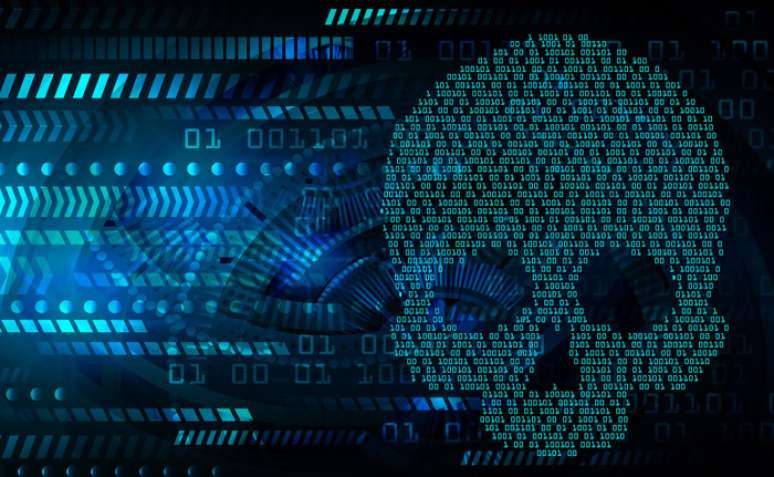Learn about some of the top cybercriminal groups of recent times
The entire world is a constant target for cybercriminals. Turn around and move they attack again. In an effort to disable computers, steal data, or use a hacked system to launch more scams, hackers are always innovating with different methods. Malware, phishing, ransomware, man-in-the-middle are just a few types of threats from a dark and dangerous universe.
In an increasingly digital society, intrusions have become sophisticated and are only increasing. Furthermore, they are always aimed at a person, an organization or a country. The year 2022, among others, has seen hacker attacks on institutions and large companies, such as Nvidia, Localiza, Lojas Renner, Banco de Brasília, Record TV, Ministry of Health, among others. Regardless of the type of threat, all kinds of damage can occur.
Confidential data, of the company itself and of third parties, are always at stake, not to mention the economic damage to recover what has been lost and, in fact, increase security.
31.5 billion cyber attack attempts
To give you an idea, Brazil recorded 31.5 billion cyberattack attempts on companies in the first half of 2022 alone. The number is 94% higher than in the first half of last year, when there were 16.2 billion registrations.
The data belongs to a survey by Fortinet, a cybersecurity solutions company. The study was conducted by the FortiGuard Labs threat intelligence laboratory.
To pay even more attention to this parallel universe, how about getting to know some of the major cybercriminal groups of recent times?
The Shadows
This collective obtained the files from the NSA in 2013, allegedly pulled from a test server of the US National Security Agency itself. This included information on all kinds of espionage exploits.
No one is quite sure where the Shadow Brokers came from, but theories include an insider in the NSA’s Tailored Access Operations group.
Lazarus group
The mysterious Lazarus group may be behind the heist that embezzled $81 million from the Central Bank of Bangladesh in 2016. Not much is known about this organization, who is part of it or where it operates from, but researchers at security provider Kaspersky they tracked her for more than a year.
Among its actions, the group distributes malware specially designed to bypass security and thus carry out transactions. As mentioned, no one knows for sure where Lazarus operates, however, studying a collection of malware samples, Kaspersky found a strange connection to a command and control server from a “very rare” IP address in North Korea.
Group of equations
The Equation Group refers to the NSA’s shadowy Custom Access Operations Unit. The group is famous for being associated with Stuxnet, a highly sophisticated (especially in its time, 2010) attack that successfully destroyed Iranian nuclear centrifuges, although there are suspicions that the unit reported the attack rather than having it perpetrated.
According to the Kaspersky company, the group is “unique in almost all aspects of its activities”. They use extremely complicated and expensive to develop tools as well as data mining and hiding work in an “exceptionally professional” way.
The group maintains an extensive command and control infrastructure, located on over 100 servers and 300 domains, including hosts in regions such as the US, UK, Panama, Costa Rica, Colombia, Germany and the Netherlands.
Carbanak/Fin7
The group called Carbanak has been wanted by international law enforcement for at least five years for the theft of $1 billion and a series of cybercrimes and compromised ATM networks. Carbanak (also known as Fin7) sent highly targeted phishing campaigns, in other words spear phishing, to trick bank employees into downloading malware.
Since late 2013, the gang has been using their own malware, Anunak and Carbanak, and later a modified version of security testing software called Cobalt Strike. US security vendor FireEye noted that the group directed its phishing campaign to the US Securities and Exchange Commission.
Otto Pohlmann is CEO of Centric Solution, a technology company that provides solutions to meet security and GDPR requirements.
Source: Terra
Rose James is a Gossipify movie and series reviewer known for her in-depth analysis and unique perspective on the latest releases. With a background in film studies, she provides engaging and informative reviews, and keeps readers up to date with industry trends and emerging talents.


![New Day ahead: Tera discovers an incredible truth about Gabriel and Audrey … which is waiting for you from the week of 2025 to 18, July 18, 2025 [SPOILERS] New Day ahead: Tera discovers an incredible truth about Gabriel and Audrey … which is waiting for you from the week of 2025 to 18, July 18, 2025 [SPOILERS]](https://fr.web.img5.acsta.net/img/b6/e5/b6e5ddee257bc9a8ae5bb9587db6efc3.jpg)




